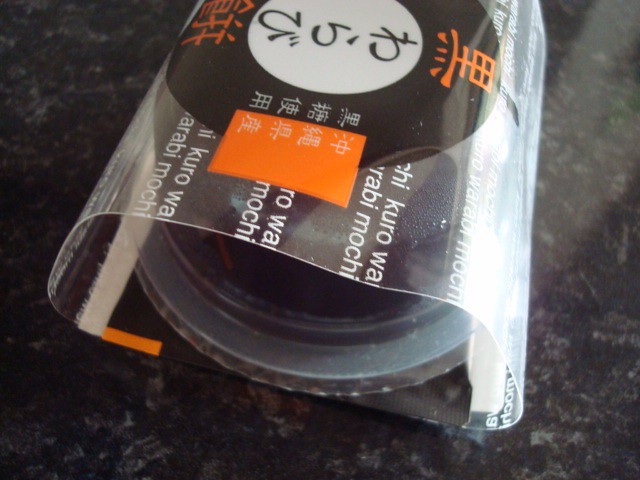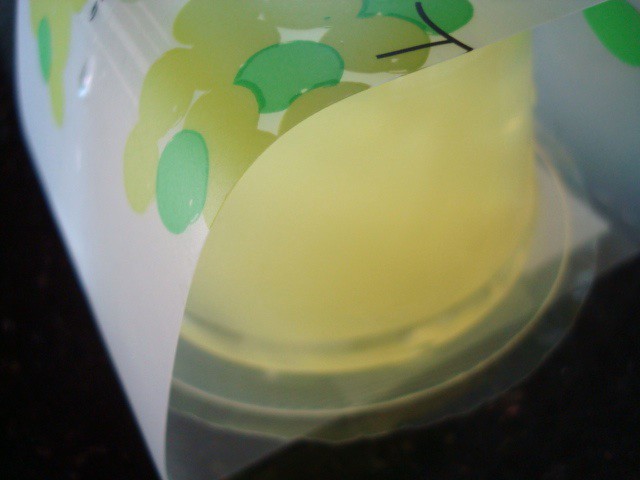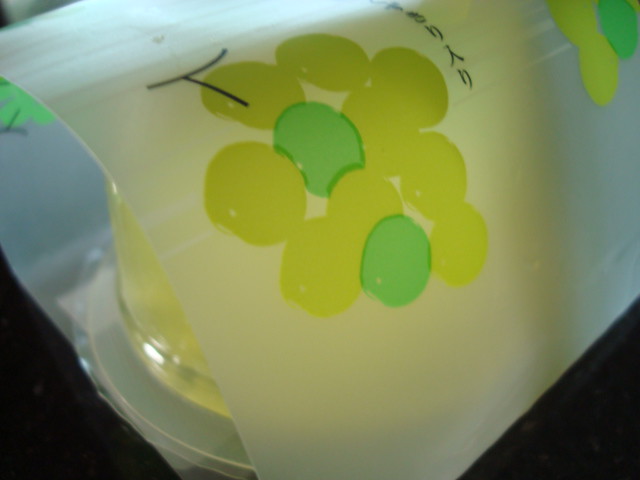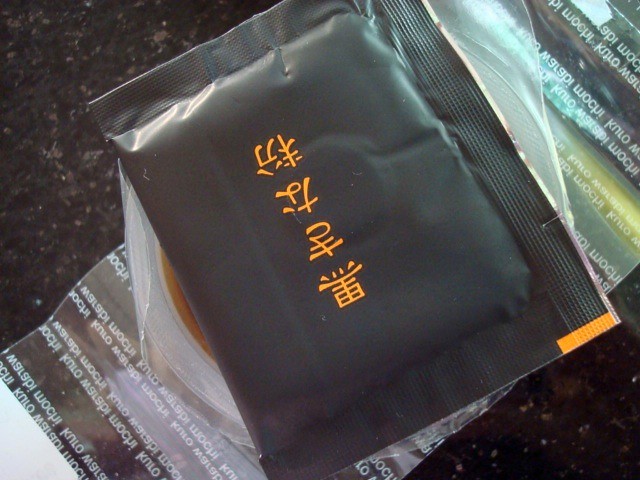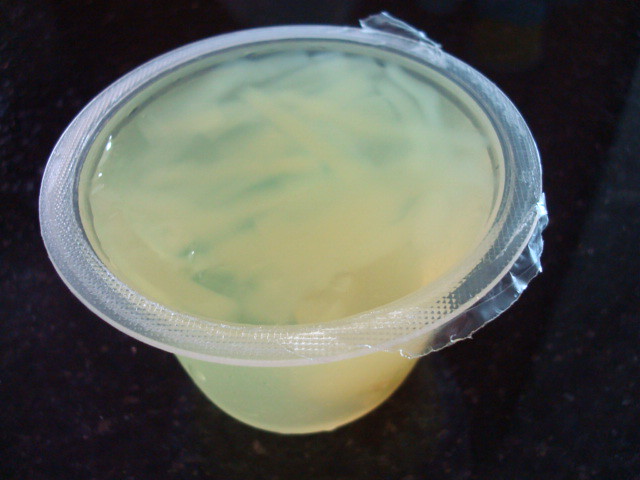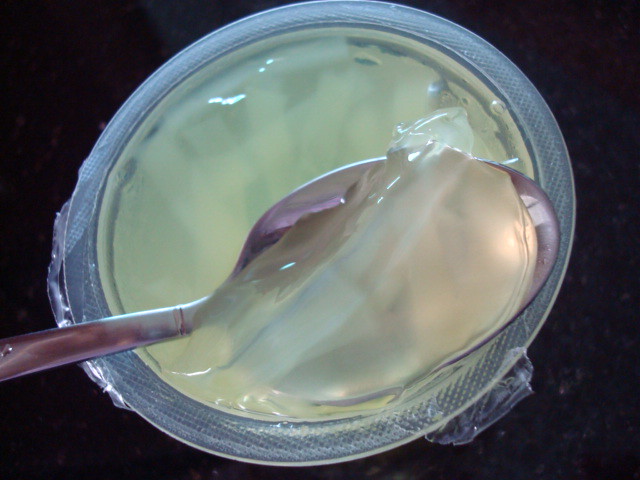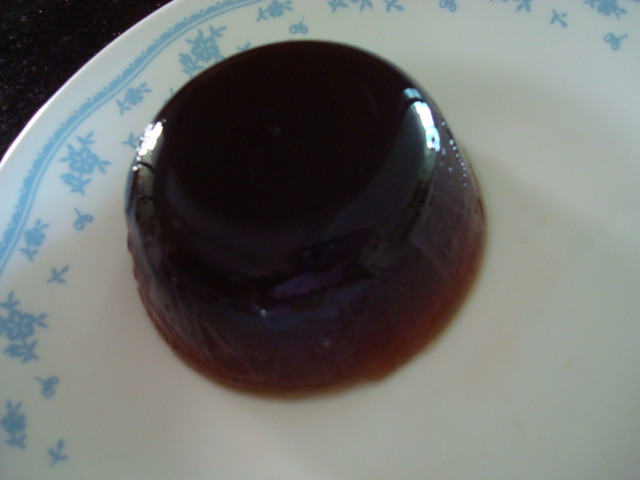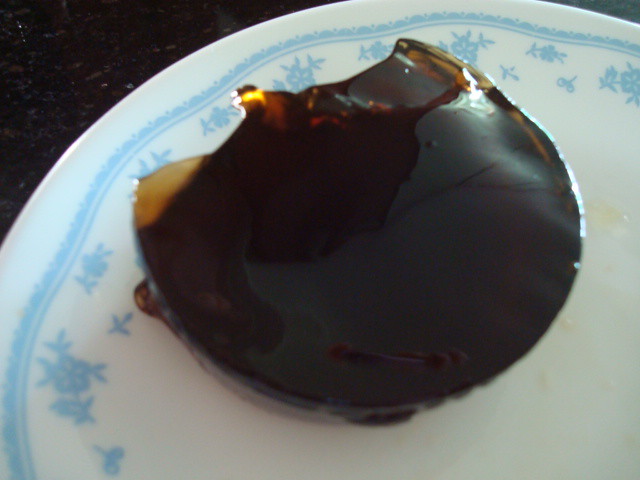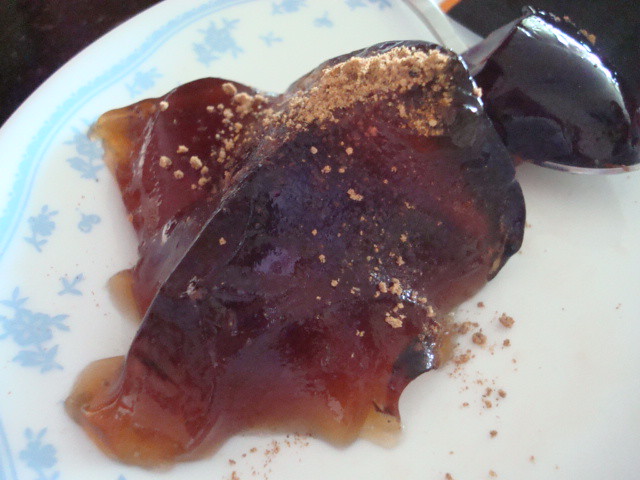Sunny
Bringing together a world with its characters is MEIDI-YA. Basement of Liang Court. Yakult 4 flavours, philadelphia cream cheese, shabu shabu sauce. Where grocery shopping is bright and cold like an airport.
Creating the landscape is steaming hot food stalls. Equally hygienic and tidy. Costume and weaponry design are japanese confectioneries; transparent, sandbag or dainty-looking. There were a lot of new terms and gestures to be picked up, from shochu to kinoko. A repository of articles.
Black Warabi Jerry with Black Bean & Black Sesame (SGD 3.00)
So this is what a mouthful. Note: jerry. I feel cheery already.
KUZU Jelly Noodle with Fruit Jelly (SGD 3.00)
And this too. Kuzu, a healing plant which can be made into soaps, jerries, and herbal teas. When we usually see nata de coco, aloe vera, or konnyaku in our jellies.
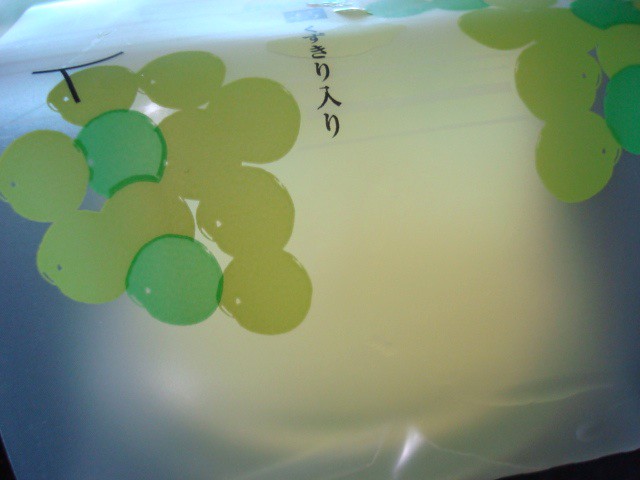
Rummaging the sagachiku counter jellies are rrolled like sushi/sashimi. Apple jelly, grape jelly, even the black ones in clear nori. Mochis too in oak leaf. So this is what they call jerry, not jelly. Jerry, something which fills the entire container in one colour; like water.
The fruit jelly is grape. Glucose; or fructose. "White" table grapes that make it green.
The packet on command to turn the black jerry into warabimochi! Kuro warabi mochi, because there is black sugar in the jerry; black sesame, black rice, black soybean in the soybean powder.
Like a bento set, there is noodles in the jelly! Floating around like invertebrates. Noodle jelly, or glass noodle jelly even; they take some time to comprehend because there is a clash of two nouns. Like rainbow salad or sandwich cookie. It could have been a jelly made of noodles or noodles tasting like jelly. Your main course and fruits dessert all being served at once.
So we can scoop the noodles with a spoon. The kuzu was mineralised, tasting strongly of grape extract. The noodles gave your jelly something extra else to eat, though being of rather similar porosity and density, yet remember, the colour's different.
Whole, round black jellyjerry. So black; it looks naked. Where black and green are seldom marketed in dessert, black less with its credentials not powerful enough alone to do crowd controls. We remember the grass jelly, tortoise jelly(guilinggao), and liquorice herb-like tasting and 'mugwort'.
But no, this one is cola, look at the rims of gold emitting hope! Sinking the teeth into the bracken starch, it is caramel; black sugar! Burnt to perfection, like egg tarts, rumy.
And it all comes to light with the splaying of soybean, (the black soybean, black sesame, and black rice powder). Velvet puffs, remember, the mochi or kueh you find in japanese bowls, with your parfait or hot and cold desserts. Allay it with more or whittle in cubes and you will find it all the more familiar. Those pliable brown/white little things that make the sweets japanese.
Now that it looks like a mooncake with precious pearl powder, it do tastes out-of-the world too. The runny, liquidised puree with smooth, melt-in-your-mouth powder. No wonder many Singaporeans take peanut mee chiang kueh or chwee kueh as their daily bread. Starch dabbled in sweet/savoury powder has always been a combination number.
P.S. Bento box or do it yourself projects, this is the final step of the game; the building up of emotions in the package, with you and your jelly in uncovering the different layers, it/of eating it.



